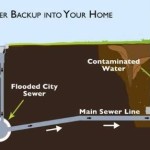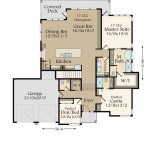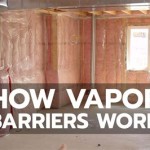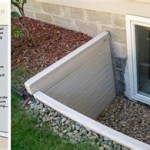What Insulation Do I Use For Basement Ceiling?
Insulating a basement ceiling is a crucial step in improving a home's energy efficiency, comfort, and indoor air quality. By properly insulating this area, homeowners can reduce heat loss during the winter and prevent excessive heat gain during the summer. This translates into lower energy bills and a more comfortable living environment in both the basement and the floors above. The choice of insulation material and installation method will significantly impact the effectiveness of the insulation. Therefore, careful consideration must be given to factors such as the climate, the basement's intended use, and the presence of moisture.
Several types of insulation are suitable for basement ceilings, each with its own advantages and disadvantages. These include fiberglass batts and rolls, rigid foam boards, spray foam insulation (both open-cell and closed-cell), and mineral wool batts. The best choice for a particular situation will depend on factors such as budget, the presence of obstructions like pipes and wiring, and the desired R-value (a measure of thermal resistance).
Proper installation is just as important as choosing the right type of insulation. Gaps and air leaks can significantly reduce the effectiveness of the insulation, allowing heat to escape and moisture to accumulate. It is important to ensure that the insulation is installed snugly against the ceiling joists and that any gaps are sealed with caulk or spray foam. In addition, a vapor barrier may be necessary in some climates to prevent moisture from condensing within the insulation.
Understanding R-Value and Insulation Requirements
The R-value of insulation is a measure of its resistance to heat flow. The higher the R-value, the better the insulation's ability to prevent heat transfer. The recommended R-value for basement ceiling insulation varies depending on the climate zone in which the home is located. In colder climates, a higher R-value is generally recommended to provide adequate thermal protection.
Local building codes often specify minimum R-values for insulation in different parts of a home, including basement ceilings. It is important to check with the local building department to ensure that the chosen insulation meets these requirements. Exceeding the minimum R-value may provide additional energy savings and comfort, but it is important to consider the cost-effectiveness of doing so.
The R-value of insulation is typically specified per inch of thickness. Different insulation materials have different R-values per inch. For example, fiberglass batts typically have an R-value of around 3 to 4 per inch, while rigid foam boards can have R-values of 5 or more per inch. When selecting insulation, it is important to consider the required R-value and the thickness of the insulation needed to achieve that R-value.
It's important to note that the stated R-value of insulation is based on ideal laboratory conditions. In real-world applications, the actual R-value may be lower due to factors such as compression, air leaks, and moisture. Therefore, it is generally advisable to choose insulation with a slightly higher R-value than the minimum requirement to account for these factors.
In addition to R-value, it is also important to consider the thermal bridging effect. Thermal bridging occurs when heat is conducted through materials that are more conductive than the surrounding insulation, such as wood framing members. This can reduce the overall effectiveness of the insulation. To minimize thermal bridging, it is important to ensure that the insulation is installed snugly against the framing members and that any gaps are sealed.
Types of Insulation Suitable for Basement Ceilings
Several types of insulation are commonly used for basement ceilings, each with its own characteristics. Understanding these characteristics can help homeowners make an informed decision about the best insulation for their specific needs.
Fiberglass Batts and Rolls: Fiberglass is a relatively inexpensive and readily available insulation material. It consists of fine glass fibers that trap air, providing thermal resistance. Fiberglass batts and rolls are easy to install between ceiling joists. However, they are susceptible to moisture damage and can lose their effectiveness if they become compressed or wet. It is important to handle fiberglass with care, as the fibers can be irritating to the skin and respiratory system. Wearing gloves, a dust mask, and eye protection is recommended during installation.
Rigid Foam Boards: Rigid foam boards, such as expanded polystyrene (EPS), extruded polystyrene (XPS), and polyisocyanurate, offer higher R-values per inch than fiberglass. They are also more resistant to moisture damage. Rigid foam boards can be cut to size and installed between ceiling joists. They are often used in combination with spray foam to seal air leaks and provide a continuous layer of insulation. However, some types of rigid foam boards are flammable and may require a fire-resistant covering.
Spray Foam Insulation: Spray foam insulation comes in two main types: open-cell and closed-cell. Open-cell spray foam is less expensive and has a lower R-value per inch than closed-cell spray foam. It is also more permeable to moisture. Closed-cell spray foam has a higher R-value per inch and is more resistant to moisture. It also expands to fill gaps and cracks, providing an excellent air seal. Spray foam insulation is typically installed by professionals using specialized equipment.
Mineral Wool Batts: Mineral wool, also known as rock wool or slag wool, is made from recycled materials and has excellent fire-resistant properties. It also has good sound-dampening qualities. Mineral wool batts can be installed between ceiling joists in a similar manner to fiberglass batts. They are more resistant to moisture damage than fiberglass and do not promote mold growth.
Addressing Moisture Concerns in Basements
Basements are often prone to moisture problems due to their location below ground level. Moisture can enter the basement through the foundation walls, the floor, or through condensation. Excessive moisture can lead to mold growth, wood rot, and other problems. Therefore, it is important to address moisture concerns before insulating a basement ceiling.
One important step is to ensure that the basement has adequate drainage. This may involve installing or improving the perimeter drainage system, which consists of perforated pipes that collect water around the foundation and direct it away from the house. It is also important to ensure that the gutters and downspouts are functioning properly and that they are directing water away from the foundation.
Another important step is to seal any cracks or holes in the foundation walls and floor. These cracks can allow moisture to enter the basement. They can be sealed with concrete crack sealant or epoxy. It is also important to seal any penetrations in the foundation walls, such as those for pipes or wiring.
A vapor barrier may be necessary in some climates to prevent moisture from condensing within the insulation. A vapor barrier is a material that is designed to prevent moisture from passing through it. It is typically installed on the warm side of the insulation, which is the side that faces the living space. In colder climates, the vapor barrier should be installed on the inside of the insulation. In warmer climates, it may not be necessary to install a vapor barrier.
In addition to these measures, it is important to maintain good ventilation in the basement. This can help to reduce humidity levels and prevent mold growth. A dehumidifier can also be used to remove excess moisture from the air.
When selecting insulation for a basement ceiling, it is important to consider its resistance to moisture damage. Some insulation materials, such as fiberglass, are more susceptible to moisture damage than others, such as rigid foam boards or spray foam. If the basement is prone to moisture problems, it may be advisable to choose an insulation material that is more resistant to moisture.
Properly addressing moisture concerns before insulating a basement ceiling is crucial for ensuring the longevity and effectiveness of the insulation. Failure to do so can lead to costly repairs and health problems.
By carefully considering the factors discussed in this article, homeowners can make an informed decision about the best type of insulation to use for their basement ceiling and ensure that it is properly installed. This will result in a more comfortable, energy-efficient, and healthy home.

Should I Insulate My Basement Ceiling And Walls Aire Serv

Ceiling Insulation In Your Basement

What Is Basement Ceiling Insulation And It Worth

Best Insulation For Soundproofing Your Ceiling Renoviso

Basement Ceiling Insulation Interior Inspections Internachi Forum

How To Soundproof A Basement Ceiling

How To Insulate Your Basement 2 10 Home Buyers Warranty

Basement Insulation Jm Of New Bedford

Basement Insulation Upstate Spray Foam

Insulate A Basement Ceiling With Building Moxie As The Diy Guy
Related Posts







